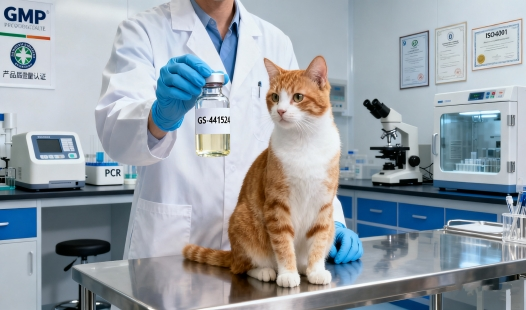Antiviral GS-441524 Injection vs Pills: What Cat Owners Should Know
Pharmacokinetic Distinctions Between Antiviral GS-441524 Injection and Pills
- Pharmacokinetic Distinctions Between Antiviral GS-441524 Injection and Pills
- Clinical Scenarios Favoring GS-441524 Injection or Oral Administration
- A Comprehensive Overview of GS-441524 Injection and Pill Treatment Options
- Conclusion
- FAQ
- Experience the BLOOM TECH Advantage in GS-441524 Manufacturing
- References
People who own cats may find it hard to deal with feline infectious peritonitis (FIP). So many people are hoping that the GS-441524 injection could be the answer. But they want to know how to give it to cats who need it in the best way. If you want to do what's best for your cat, read this. It will show how GS-441524 shots are different from GS-441524 pills.


Pharmacokinetic Distinctions Between Antiviral GS-441524 Injection and Pills
Finding out about the pharmacokinetics of GS-441524 is important for picking the best way to treat the condition. How the drug is taken, distributed, and flushed out of the body can have a big effect on how well it treats FIP.
Absorption and Bioavailability
Most of the time, GS-441524 injections are more bioavailable than food or drugs. An injection under the skin gets straight into the bloodstream without going through the digestive system. It's possible that this will make the drug work faster and give the body more of the active ingredient.
GS-441524 pills, on the other hand, must first be taken by the stomach system. This process can be changed by things like the cat's metabolism, the amount of food it eats, and the health of its gut. Because of this, oral forms may not be as bioavailable or stable as injections.
Distribution and Tissue Penetration
GS-441524 can get into the body through the mouth and spread all over, even crossing the blood-brain barrier. But how the drug is taken in may change the amount in different parts of the body.
Giving injections at the start of treatment may help keep drug levels in the blood and tissues more fixed. This method is more convenient, but because it is not always the same, it may cause changes in drug amounts when taken by mouth.
Metabolism and Elimination
GS-441524 is mostly broken down and flushed out of the body the same way no matter how it is given. Given as pills or shots, the rate at which the drug leaves the body might be a little different.
Since injection forms don't go through the liver's first-pass metabolism, they may have a more stable clearance profile. For instance, medicines that are taken by mouth may be broken down more thoroughly in the liver before they reach the bloodstream.
Clinical Scenarios Favoring GS-441524 Injection or Oral Administration
GS-441524 shots or pills are usually chosen based on how the FIP is showing up in the cat and what it needs.
Acute and Severe Cases
GS-441524 injections may be best for people who have had a major or recent FIP, especially if they have neurological problems. When your life is in danger, injections can be very helpful because they work quickly and may have bigger doses of the drug.
Injections may help cats with major symptoms or those who are just starting to feel better because they keep their drug levels more stable. Doctors can keep a closer eye on things and change the amounts quickly if they need to with this method.
Maintenance and Long-term Treatment
It might be better to give your cat GS-441524 pills if it is steady or getting long-term care. Giving it by mouth can help with loyalty, especially for pets that have trouble getting shots.
Oral types may also be better for cats that get very upset or stressed out when they keep getting injected. To keep the helpful effects going, it is very important to make sure that the mouth dose gives the right amount of drug.
Combination Approaches
Sometimes, veterinarians will suggest a combination approach, beginning with injections during the acute phase and then switching to pills to be taken by mouth for long-term treatment. This plan tries to take advantage of the good things about both ways of administering while minimizing the bad things that might happen.
Owner and Patient Factors Influencing the Choice of GS-441524 Injection vs. Pills
Choosing between GS-441524 injections and pills can depend on a number of factors relating to both the cat owner and the patient.

Owner Considerations
An important factor is whether or not cat owners are willing and able to give shots. It may be awkward for some owners to give shots, while others may find it easier than giving pills. When making a choice, the price and availability of different formulas can also be important.
Patient Tolerance and Compliance
Different cats may have different amounts of tolerance for medicines given by mouth or through injections. For cats that are really hard to pill, injections might work better, while oral administration might work better for cats that get too stressed out by shots. When deciding between injections and pills, you should also think about the cat's general health, including any other health problems or medications it may be taking at the same time.
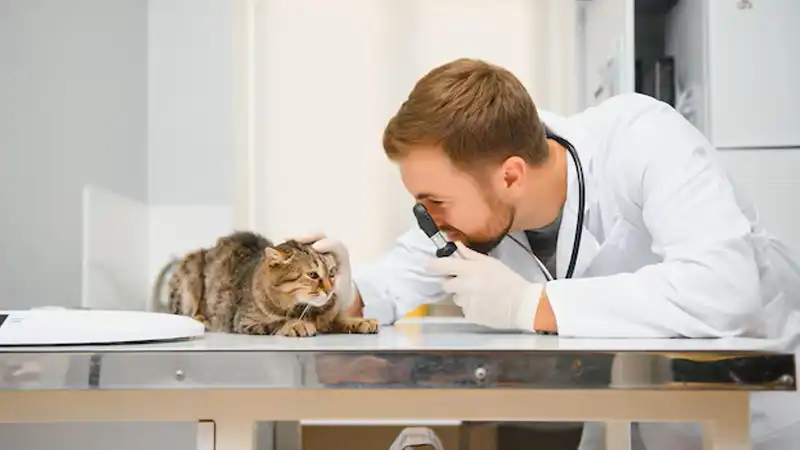
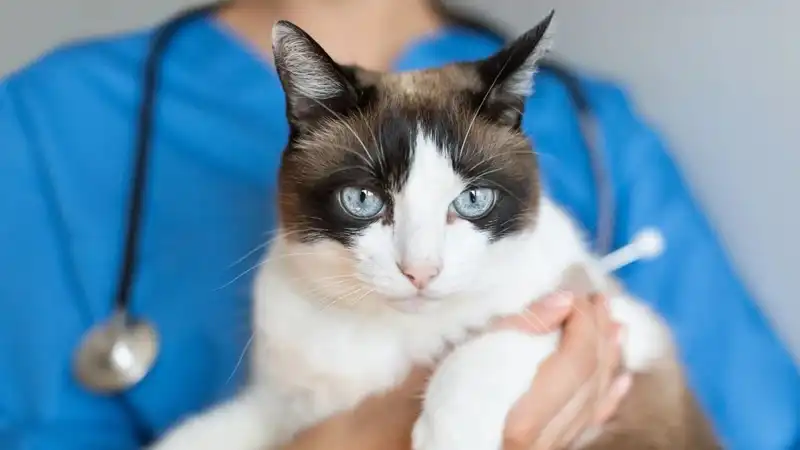
Lifestyle and Environmental Factors
The cat's living space and daily habit may affect how the medicine is given. Injections may be better for cats that live outside or in homes with more than one cat because they let you control the dose more precisely. If, on the other hand, cats that stay inside and have a normal schedule might do well with regular oral medication.
Managing Transitioning Between GS-441524 Injection and Pill Formulations
When switching from injectable to pill forms of GS-441524, it needs to be carefully planned and watched to make sure that the therapy continues to work.
Our product
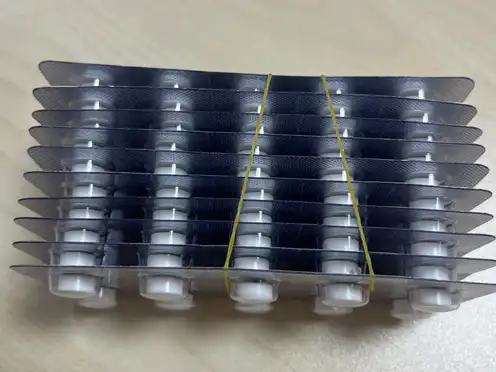
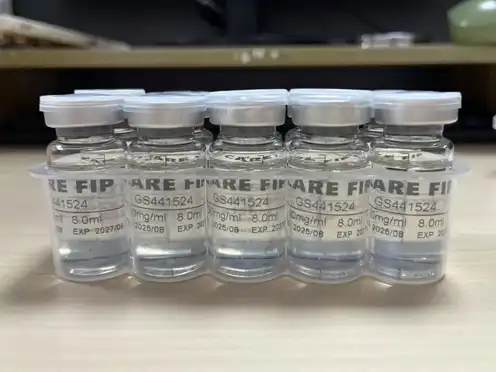
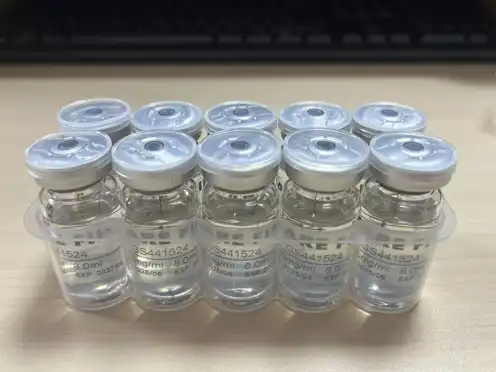
Gradual Transition Protocol
Most of the time, a gradual transition procedure is suggested when switching from injections to pills. In order to keep drug levels stable, this might mean combining the two ways of giving the drug for a short time. Closely watching the patient's vital signs and getting blood tests on a regular basis can help figure out how well the shift is going.
Dose Adjustments
If you switch between formulations, you might need to change your amount to account for differences in bioavailability. If veterinarians want the same therapeutic benefits from oral doses as injections, they may suggest higher doses. For best treatment results, patients may need to be checked in on a regular basis and their amount may need to be adjusted.
Monitoring for Treatment Response
Carefully watching how the cat responds to medicine is very important during and after the change. As part of this, clinical signs, monthly blood tests, and the quality of life as a whole are all looked at. Any signs that the disease is getting worse or coming back should make you call the vet right away.
A Comprehensive Overview of GS-441524 Injection and Pill Treatment Options
Knowing all of the different ways to treat GS-441524 can help cat owners make smart choices with the help of their vets.
Injectable Formulations
GS-441524 injection is usually administered under the skin once a day. The exact dose and length of treatment depend on how much the cat weighs, how severe the disease is, and how well it responds to treatment. Most of the time, GS-441524 injection works quickly and may be more effective in serious cases or at the start of treatment.
Oral Formulations
There are different strengths and forms of GS-441524 pills that can be taken by mouth. The medication is generally given once or twice a day, and the exact dose is determined by the cat's weight and wellbeing. For long-term treatment, oral formulations may be more convenient, but they need to be consistently absorbed to keep therapeutic amounts.
Combination Protocols
GS-441524 can be injected orally in some treatment plans, so the method can be changed to fit the needs of each cat. Injections may be used at the beginning of the treatment plan, followed by oral maintenance therapy, or a mix of the two may be used throughout the treatment. Combination methods are flexible enough to let treatment plans be made just for each person.
Conclusion
Cats with FIP have to decide between shots and pills that contain GS-441524. You should think about a few things. Both ways of giving the medicine have their good and bad points. How to do it best may depend on what the cat needs, how skilled the owner is, and how healthy the cat is.
Talking to a vet who has worked with FIP before should be the last thing that is done. Cats with this tough disease need to be checked on and closely watched all the time that will help them get better. It's also possible that their treatment plans need to be changed.
Vets and cat owners need to know about the newest GS-441524 recipes and treatment plans all the time because this is an area where new discoveries are made all the time. The best way to help our cats with FIP is to work together and use the most up-to-date information.
FAQ
1. How long does GS-441524 treatment typically last for FIP?
GS-441524 treatment for FIP typically lasts 84 days (12 weeks). However, the duration may vary depending on the individual cat's response to treatment and the severity of the disease. Some cases may require longer treatment periods, and ongoing monitoring is essential to determine the optimal duration.
2. Are there any side effects associated with GS-441524 injections or pills?
While GS-441524 is generally well-tolerated, some cats may experience side effects. Common side effects for injections include temporary pain or swelling at the injection site. For oral formulations, gastrointestinal upset may occur. In rare cases, more serious side effects such as elevated liver enzymes or kidney values may be observed. Close monitoring by a veterinarian is crucial throughout the treatment process.
3. Can GS-441524 be used preventatively for cats at high risk of FIP?
Currently, GS-441524 is not recommended for preventative use in cats at high risk of FIP. The drug is primarily used for treatment of active FIP cases. Research is ongoing to determine its potential role in prevention, but at present, it is not approved or recommended for this purpose. Maintaining good overall health and reducing stress remain the best strategies for FIP prevention in high-risk cats.
Experience the BLOOM TECH Advantage in GS-441524 Manufacturing
We're happy to be the best GS-441524 manufacturer at BLOOM TECH because our products are the best and you can count on them. These high-tech, GMP-approved companies make sure that this important fip drug for cats is made to the highest standards. We promise that the skills we use to make GS-441524 are the best because we have more than ten years of experience in chemical synthesis and pharmaceutical intermediates.
You'll notice a difference when you choose BLOOM TECH for your GS-441524 needs because we care about quality, new ideas, and customer happiness. Please email our sales team at Sales@bloomtechz.com if you have any questions or want to learn more about our GS-441524 lines. With cutting edge GS-441524 choices, BLOOM TECH can help you improve your cats' health.
References
1. Pedersen, N. C., et al. (2019). Efficacy and safety of the nucleoside analog GS-441524 for treatment of cats with naturally occurring feline infectious peritonitis. Journal of Feline Medicine and Surgery, 21(4), 271-281.
2. Murphy, B. G., et al. (2020). Treatment of cats with feline infectious peritonitis with GS-441524. Animals, 10(5), 853.
3. Dickinson, P. J., et al. (2020). Antiviral treatment using the adenosine nucleoside analogue GS-441524 in cats with clinically diagnosed neurological feline infectious peritonitis. Journal of Veterinary Internal Medicine, 34(3), 1587-1593.
4. Addie, D. D., et al. (2020). Feline infectious peritonitis. ABCD guidelines on prevention and management. Journal of Feline Medicine and Surgery, 22(11), 1028-1048.
5. Kim, Y., et al. (2020). Reversal of the progression of fatal coronavirus infection in cats by a broad-spectrum coronavirus protease inhibitor. PLoS Pathogens, 16(3), e1008370.
6. Malbon, A. J., et al. (2019). Inflammatory mediators in the mesenteric lymph nodes, site of a possible intermediate phase in the immune response to feline coronavirus and the pathogenesis of feline infectious peritonitis? Journal of Comparative Pathology, 166, 69-86.

Echo
9 years of experience in chemical articles; Doctoral degree; Organic Chemistry major; R&D-4 Dept; Technology support; R&D engineer
Anticipating your Business & Technology support inquiry
Please send us the products that interest you, and we will provide you with one-on-one service
Recommended Blog

Real recovery stories: How GS-441524 saved cats with terminal FIP?

An FIP Cat's Treatment Diary: Tracking Changes Day-by-Day on GS-441524

Top 7 Tips for Choosing the Best Antiviral GS-441524 for Your Cat


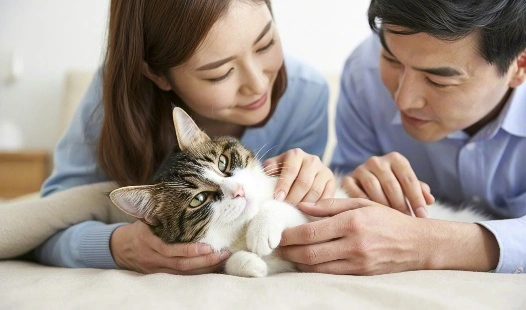


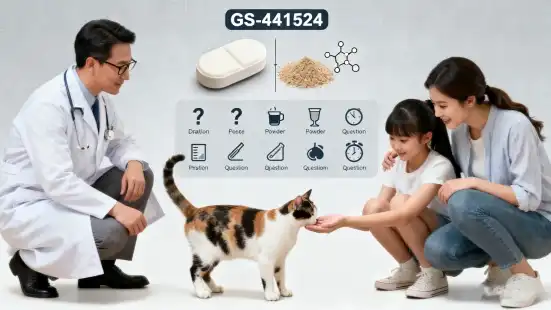
_副本_1761184893861.webp)
_副本_1762741204048.webp)
